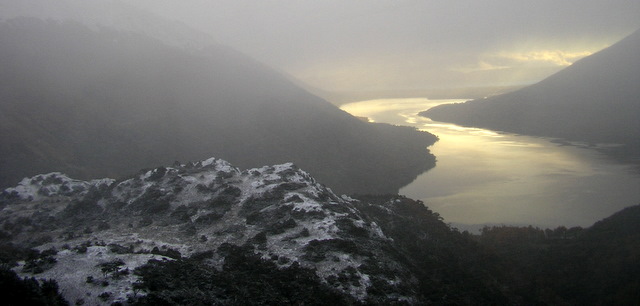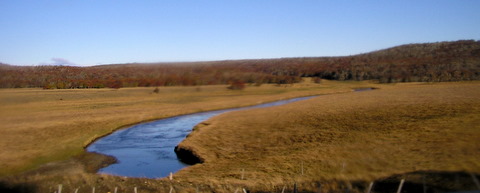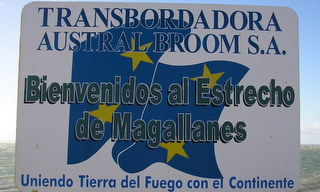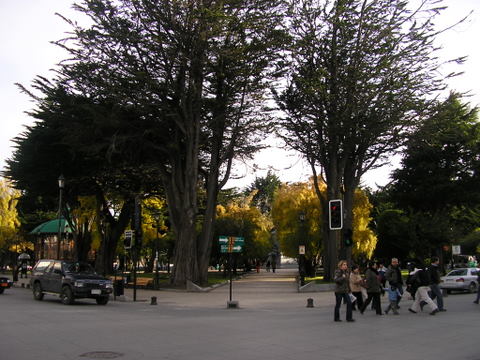|
Patagonia Sur et Islas MagallanesThe other side of the Fuegian Archipelago
The nation of Chile owns the majority of the Fuegian Archipelago and, along with the extreme southern tip of continental Patagonia, comprises their Provencia de Patagonia Sur et Islas Magallanes. The 9-½ hour bus trip is not a “third-world” experience. Argentine buses are modern, comfortable Mercedes and Volvo vehicles. Even in semi-cama, the “second class” bus, seating is thick and plush, have a rest room and both a driver and attendant. I chose a direct bus to Punta Arenas for AR$25 more rather than changing in Rio Grande and having a 4-hour wait. Schedules change frequently and you need to check with the three main companies in Ushuaia. They all have offices on or just off Avenida San Martin - check with Tourist Information or your hotel for addresses since these change as well. My ticket was AR$205 (US$56.00) lunch included. In a straight line, Ushuaia and Punta Arenas are only 155 miles apart, but this being a land of islands, traveling by bus in a straight line is not possible. We left Ushuaia at 8:00am for the 365 mile trip with dawn just breaking, in a light mixture of rain and snow. Climbing over the encircling mountains, with the trees in Autumn reds and yellows, snow fell steadily. At the summit of the pass we were traversing, Lago Fagnano lay in a valley with rays of sunlight breaking through clouds in the distance. Once over the mountains, the weather and landscape changed dramatically as the topography of southern Tierra del Fuego’s Isla Grande gave way to flat plains of peat bogs and the grazing lands of estancias. Much of Tierra del Fuego is environmentally the Patagonian steppe, miles of land with few people.
Crossing the border is a two part system. Travelers first exit Argentina with immigration then several miles down the road Chilean immigration checks passports and luggage for entry into the country. That was not as surprising as the abrupt change in the road surface from paved to packed earth and gravel with barely enough width to call it a two lane road. Many rural roads in both countries are not paved, but this is a well traveled route with buses and 16-wheelers in frequent movement. The road tested the ability of the well built Mercedes to smooth the rough surface sufficiently allowing me to sleep for several hours.
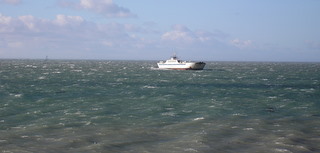
The final leg of the journey is crossing the legendary Straits of Magellan, the 16th Century discovery linking the Atlantic and Pacific that allowed shipping to avoid the treacherous winds and seas of rounding Cape Horn. Unfortunately, at the Punta Delgado-Bahia Azul crossing, the winds can be just as strong on the Straits. Southern Patagonia is known for its fierce, cold winds screaming off the Andes. The Strait was a mass of white caps with the ferries staying off shore since crossing at that time was out of the question. After a three-hour delay the winds calmed as evening fell, and the bus was able to make the 20-minute journey. Two hours later we arrived in Punta Arenas .
(Plaza Munoz Gamero, Punta Arenas)
|
